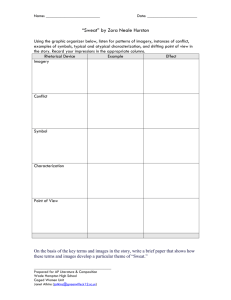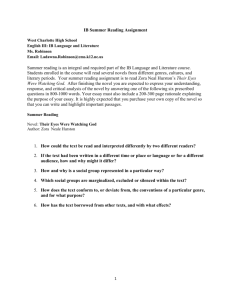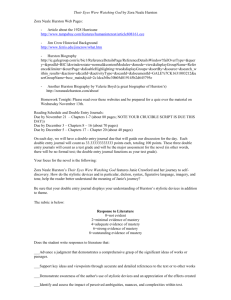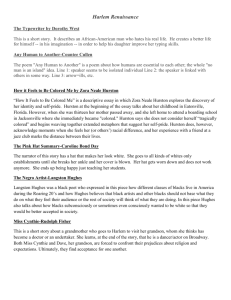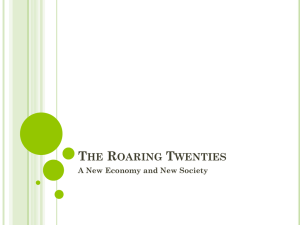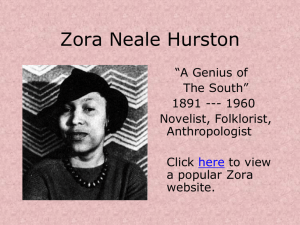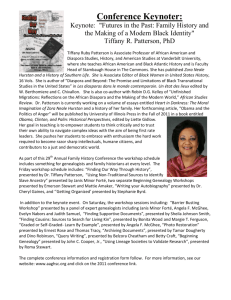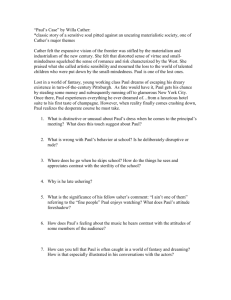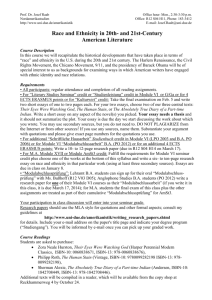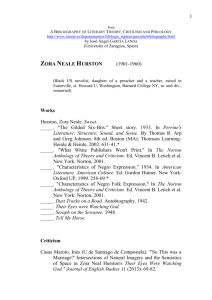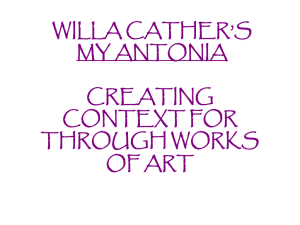Brochure Text - Kansas Humanities Council
advertisement
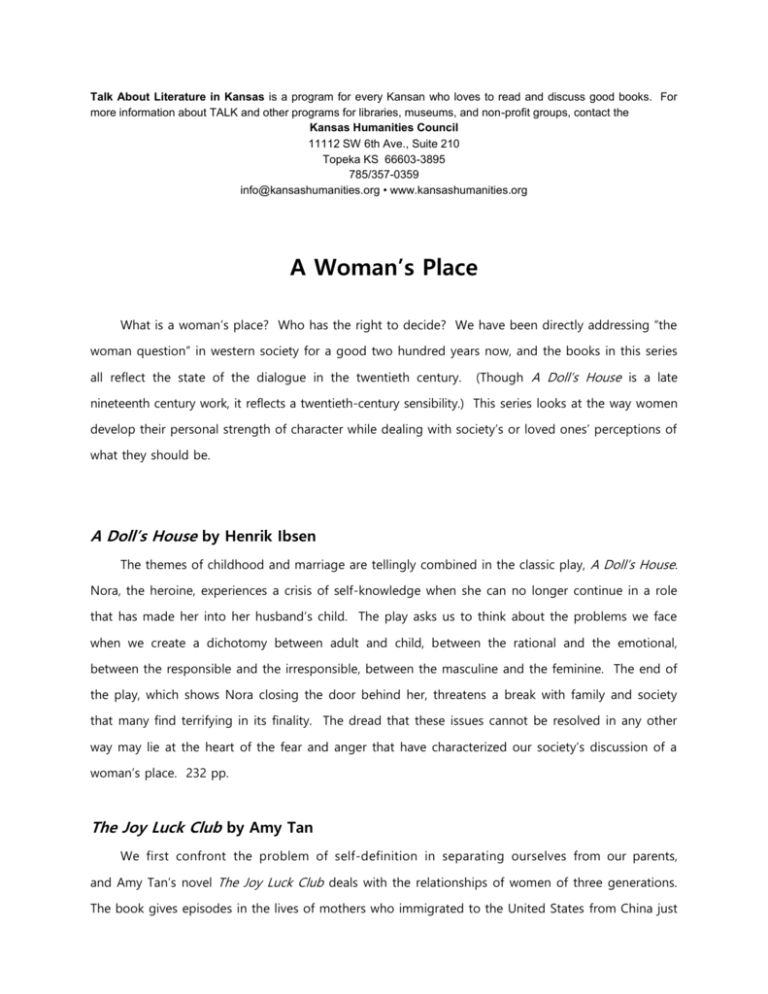
Talk About Literature in Kansas is a program for every Kansan who loves to read and discuss good books. For more information about TALK and other programs for libraries, museums, and non-profit groups, contact the Kansas Humanities Council 11112 SW 6th Ave., Suite 210 Topeka KS 66603-3895 785/357-0359 info@kansashumanities.org • www.kansashumanities.org A Woman’s Place What is a woman’s place? Who has the right to decide? We have been directly addressing “the woman question” in western society for a good two hundred years now, and the books in this series all reflect the state of the dialogue in the twentieth century. (Though A Doll’s House is a late nineteenth century work, it reflects a twentieth-century sensibility.) This series looks at the way women develop their personal strength of character while dealing with society’s or loved ones’ perceptions of what they should be. A Doll’s House by Henrik Ibsen The themes of childhood and marriage are tellingly combined in the classic play, A Doll’s House. Nora, the heroine, experiences a crisis of self-knowledge when she can no longer continue in a role that has made her into her husband’s child. The play asks us to think about the problems we face when we create a dichotomy between adult and child, between the rational and the emotional, between the responsible and the irresponsible, between the masculine and the feminine. The end of the play, which shows Nora closing the door behind her, threatens a break with family and society that many find terrifying in its finality. The dread that these issues cannot be resolved in any other way may lie at the heart of the fear and anger that have characterized our society’s discussion of a woman’s place. 232 pp. The Joy Luck Club by Amy Tan We first confront the problem of self-definition in separating ourselves from our parents, and Amy Tan’s novel The Joy Luck Club deals with the relationships of women of three generations. The book gives episodes in the lives of mothers who immigrated to the United States from China just 2 after World War II and their adult daughters who grew up in America. There is a childhood experience and an adult experience told by each woman, with the adult experiences of the mothers overlaying the childhood experiences of their daughters. A formative childhood experience determines the wisdom each woman wants to pass on to her daughter. But the irony for any parent is that when she succeeds in making life different for her child, that very difference separates them. This affirmative novel offers hope and insight into mothering and daughtering. 288 pp. A Lost Lady by Willa Cather The many roles which may define a woman’s life are summed up in A Lost Lady. Glamorous Marian Forrester is living a buried life on the frontier just when the pioneer days are giving way to modern times. Over the years, a neighbor boy sees Mrs. Forrester through a series of stereotypes: local grande dame, wife, teacher, friend, goddess, whore. It may not be too reckless to say that in this book Cather gives us a program for “growing up” in our perceptions of a woman’s place. The test of maturity is to finally see woman as a fellow human being. 150 pp. Their Eyes Were Watching God by Zora Neale Hurston By contrast, we are given much to hope for in a romantic tale of courage and resilience by Zora Neale Hurston in Their Eyes Were Watching God. Hurston (who has profoundly influenced the work of Alice Walker) shows us three types of marriage in the three relationships of her heroine. Janie has the experience of being a “mule” and a “queen” and, finally, an equal companion. The novel, a classic of the Harlem Renaissance, also deals with African-American pride, showing self- esteem to be at the base of all productive relationships. 195 pp. A Yellow Raft in Blue Water by Michael Dorris Michael Dorris’ A Yellow Raft in Blue Water explores the mother and daughter relationships among three Native American women in the contemporary Northwest. We first see the youngest woman struggling to define herself and to decide which of many demands on her to comply with, and which to defy. We then move back a generation to see the experiences and perceptions that shaped her mother and affected their relationship. Then we move back again to see the life of the grandmother. Interestingly, each of the mothers rejects “Mother” as a name because she is struggling with society’s view of her. How much is connectedness at odds with autonomy? How much might relationships nourish the development of a stronger self? 372 pp. 3 Suggestions for Further Reading Bennett, Mildred. The World of Willa Cather. New York: Dodd, Mead, 1951. Brontë, Charlotte. Shirley. New York: Oxford, 1979. Cather, Willa. O Pioneers! New York: Penguin, 1989. Emecheta, Buchi. Double Yoke. New York: Braziller, 1983. Hemenway, Robert. Zora Neale Hurston: A Literary Biography . Chicago: University of Chicago Press, 1977. Hurston, Zora Neale. Jonah’s Gourd Vine. New York: Harper Collins, 1990. ___. I Love Myself When I Am Laughing: A Zora Neale Hurston Reader. Edited by Alice Walker. Old Westbury, N.Y.: Feminist Press, 1979. Knapp, Mona. Doris Lessing. New York: Ungar, 1984. Lessing, Doris. The Diaries of Jane Somers. New York: Random, 1984. ___. The Good Terrorist. New York: Random, 1986. Pickering, Jean. Understanding Doris Lessing. Columbia, S.C.: University of South Carolina Press, 1990. Russell, Sandi. Render Me My Song: African-American Women Writers From Slavery to the Present. New York: St. Martin’s, 1990. Seton, Cynthia Propper. A Private Life. New York: Norton, 1982. Shaw, G. B. Shaw and Ibsen: Bernard Shaw’s The Quintessence of Ibsenism, and Related Writings. Toronto: University of Toronto Press, 1979. Tan, Amy. The Kitchen God’s Wife. New York: Putnam, 1991. Thomas, David. Henrik Ibsen. London: Macmillan, 1983. Woodress, James. Willa Cather: Her Life and Art. New York: Western, 1970.
